As much time and energy I spend on my outdoor plants, I've never been great with houseplants. I'm just not a houseplant guy. I have plenty of houseplants, and I enjoy them, but I certainly do not baby them. I like houseplants that can take some abuse -- you know, the kind that only need water once a week, and won't suffer too much if you skip a week.
This small palm was doing fine near one of the windows until the cats decided it looked enough like a bamboo and started chewing on the leaves. So I ended up moving it to the basement under my lights. Then spring arrived and I pretty much forgot about it for months.
The list of things that are wrong with this plant right now is a long one. It got burned from being too close to the bright grow lights. It has mealybugs (the white powdery clumps actually contain bugs):
It has spider mites, as evidenced by the webbing and tiny specks moving through it:
In fact, this is the palm that I took a leaf from when I was taking a look at the bamboo mites under the microscope.
I decided that I had two choices with this plant. Choice one was to throw it away. Choice two was to give it some treatment and see if I can revive it. I normally don't like killing harmless plants, so I'm going for the second option: save it!
The first thing I'm going to do is remove all of the leaves and dead parts of the plant:
Removing the leaves is important to get rid of the mealybugs and mites, plus the existing leaves looked pretty ragged. I left only the central "spike" of each that will turn into a new leaf. Hopefully the plant can handle this extreme pruning -- I've never done this before.
Next, since several of these stalks seem fairly loose in the soil (which is hard to see with a photo, but imagine me wiggling the stem around in this photo), I will remove the whole plant and repot it.
This gave me the opportunity to look at the roots too, and they look like they need to be pruned:
There's a lot of dead-looking root material here. They're all dark brown, and healthy roots are usually light colored -- definitely more white than brown. So I'll chop half or so of it off, and put it in some fresh soil.
Since the stems have some evidence of insects too, I'm going to spray the whole thing really well with insecticidal soap. I'm also going to put this in a new pot:
The old pot is one of those with the saucer attached to the ceramic pot. I don't like that type of pot because they usually don't drain well enough. As a test I filled the now-empty pot with water to see how fast it would drain:
It didn't really drain at all. A little bit of water came out of the bottom, but that's about it. Maybe I'll use these pots for bog plants -- something that likes its roots to stay really wet.
Incidentally, the label of the insecticidal soap container warned against using it on palms without testing first. Since this plant would be pretty much a goner if I didn't use the soap, I figured I had nothing to lose even if spraying killed it. So no testing -- just a full, drenching spray.
Next up is the remarkably tough "ZZ" plant, or Zamioculcas zamiifolia. I think the main plant has perished from extreme neglect, although the tubers may still be viable -- I need to dig them up and take a look.
This single small plant was salvaged though, but needs to be repotted:
I'll give it a dose of insecticidal soap too, since it was right next to the palm and may have some mites or other unwanted critters on it -- hopefully the soap does not harm it. I'll put it into a larger pot too, and add some time-release fertilizer (as I did to the palm's soil too).
(I don't recommend dropping freshly-sprayed plants onto the soil-covered driveway just before taking photos.)
If both plants look okay in a few days I'll probably spray them with insecticidal soap again. A single spraying is usually not enough on bad infestations, and I'd rather be safe than have another outbreak in a few weeks.
Now that my indoor plants are the only ones I have to care for I'll be paying more attention to them. I'm hoping that it's not too late for both of these guys, and that my efforts today helped more than they harmed.


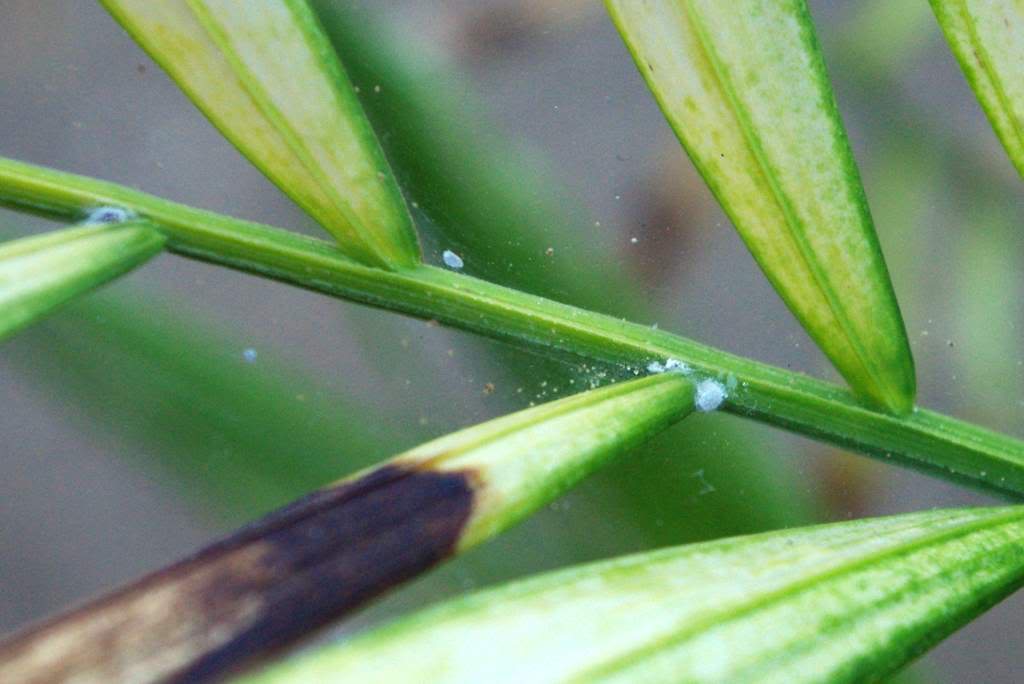
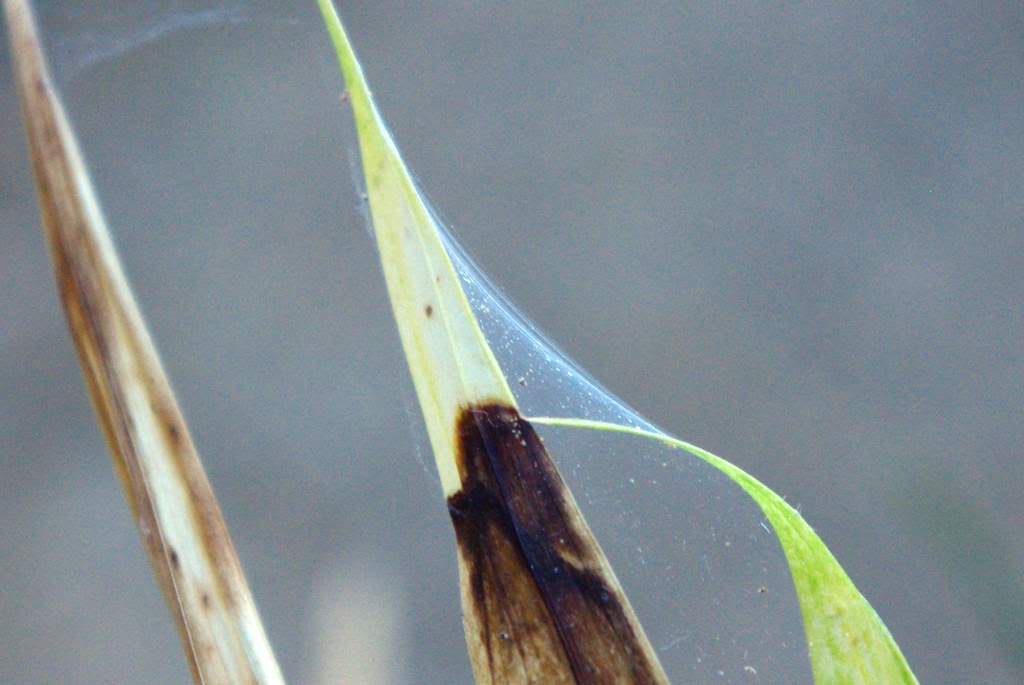

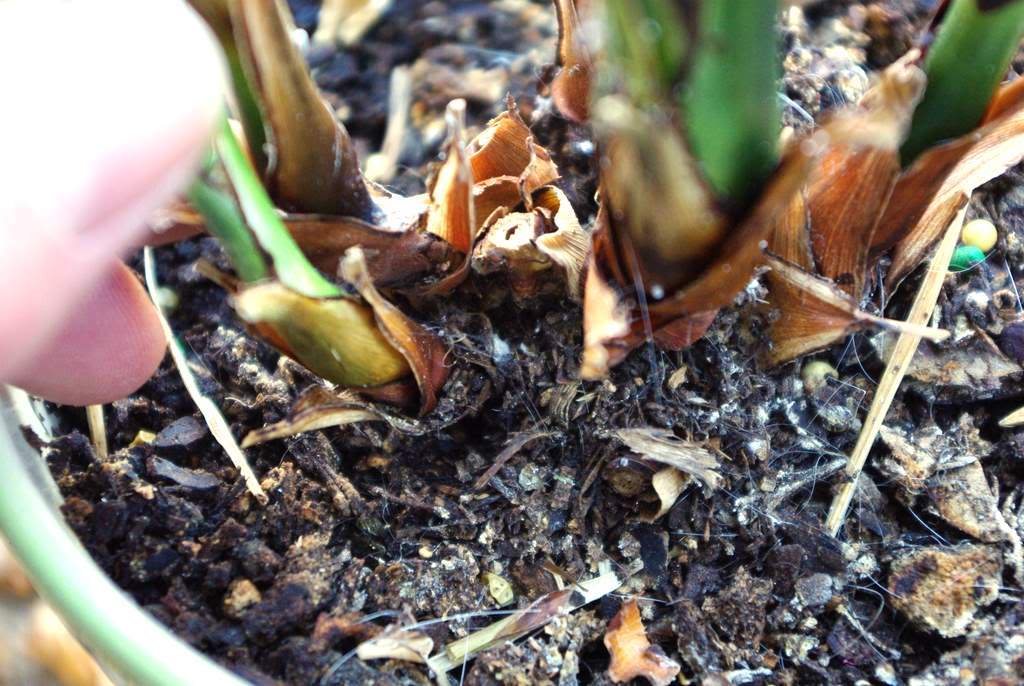
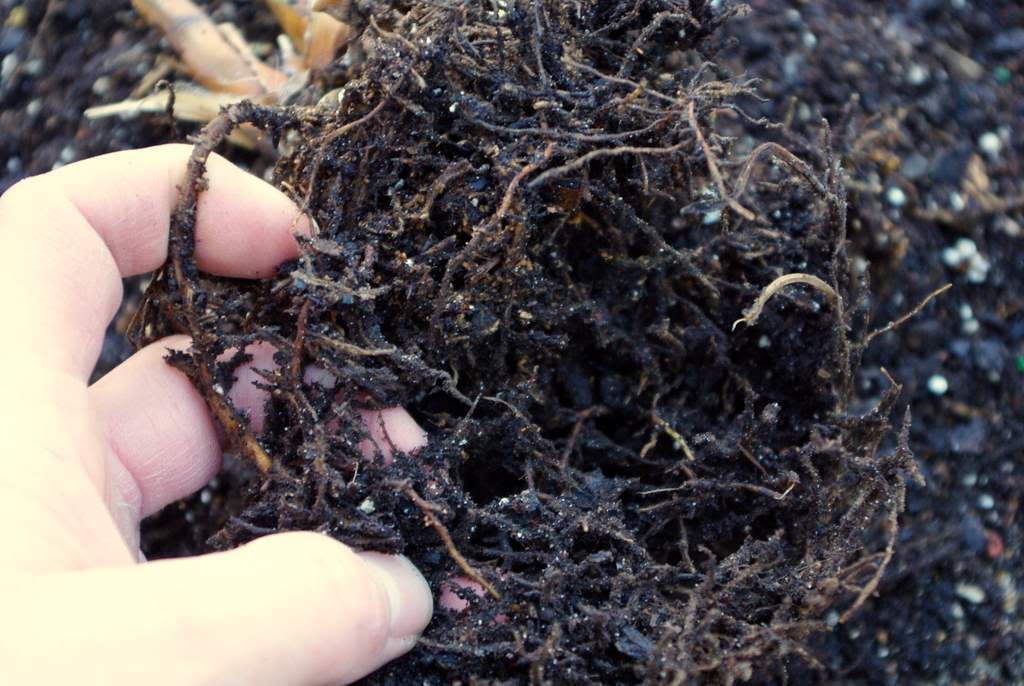

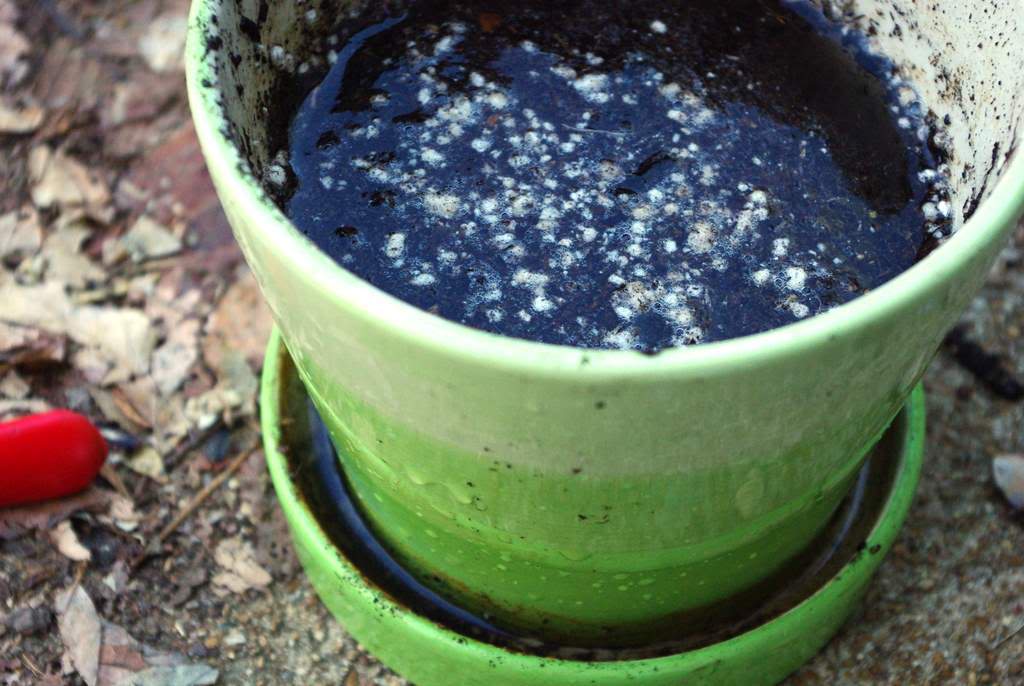
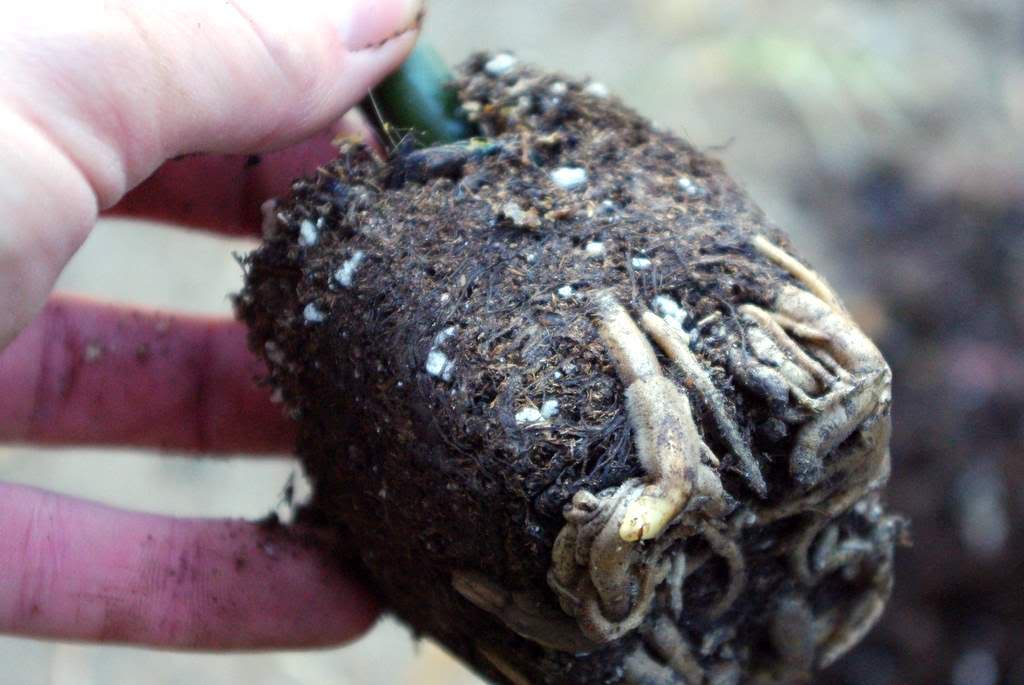

I am absolutely the worst gardener of indoor plants. I can grow anything outside, and I have an heirloom transplant business--growing 5,000 heirloom babies last spring--but my poor, neglected indoor plants always make me feel bad. Peace lilies droop to the floor, but a little water and--voila! I often see my friends taking pity on my indoor plants and wondering how I can possibly have a garden-related business. Thanks for making me feel better...maybe I will tend the indoor babies--next week.
ReplyDeleteJulie -- that's how I remember to water my peace lilies too! I have to admit they look better if you don't let them get dried out and droopy like that first though. =)
ReplyDeleteI try to keep my indoor plants as dormant as possible so I usually put them in a cooler room with adequate lighting, give them minimal water and occasionally miracle grow. I've read that green green lucky bamboo fertilizer is supposed to keep them from turning yellow so I might try that out on smaller plants. I also limit the time I keep them indoors from late December until March, and have them in the warmest part of a garage when there are frosts.
ReplyDeleteSteve -- these are full-time houseplants, not outdoor plants that I'm trying to overwinter in the house.
ReplyDelete